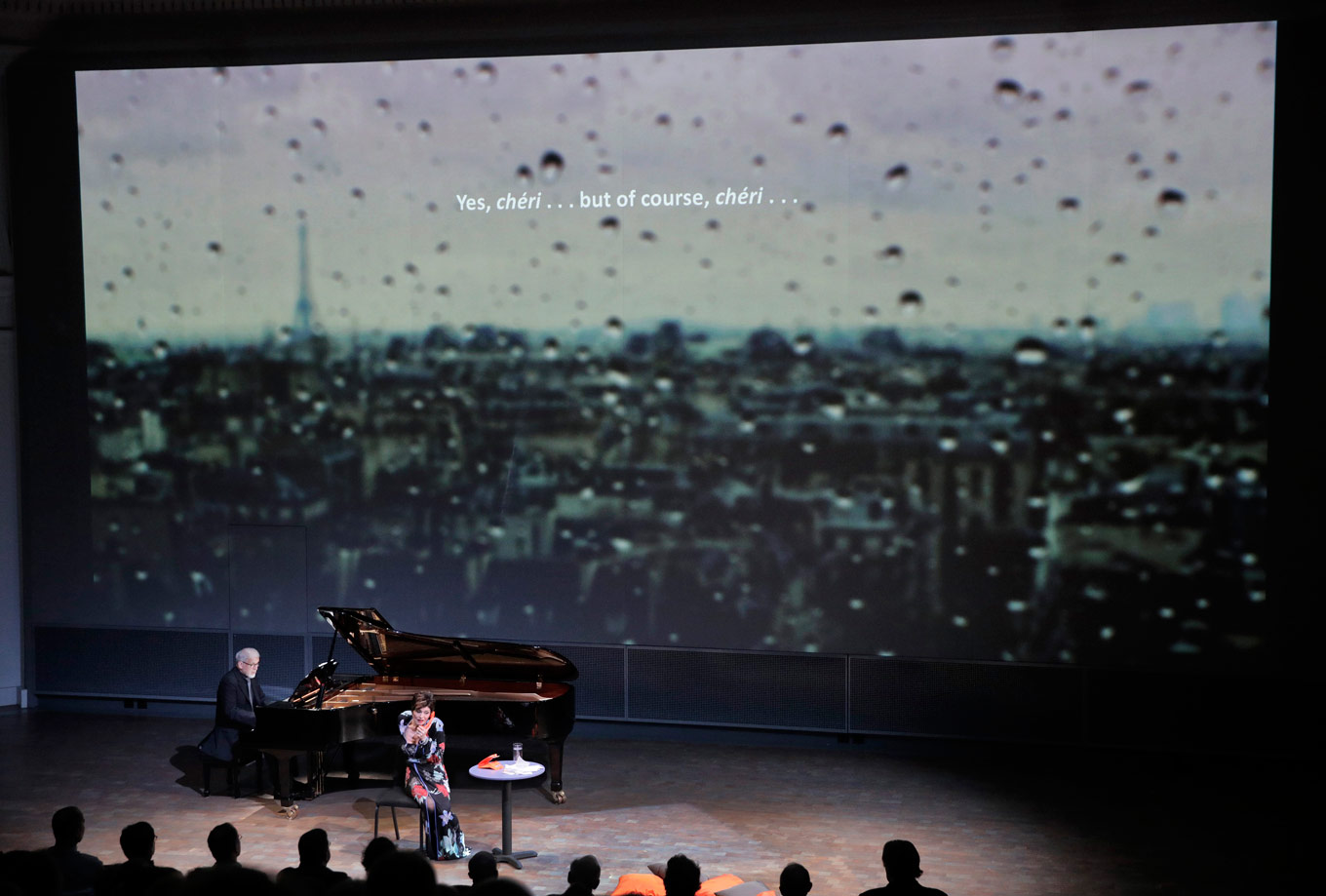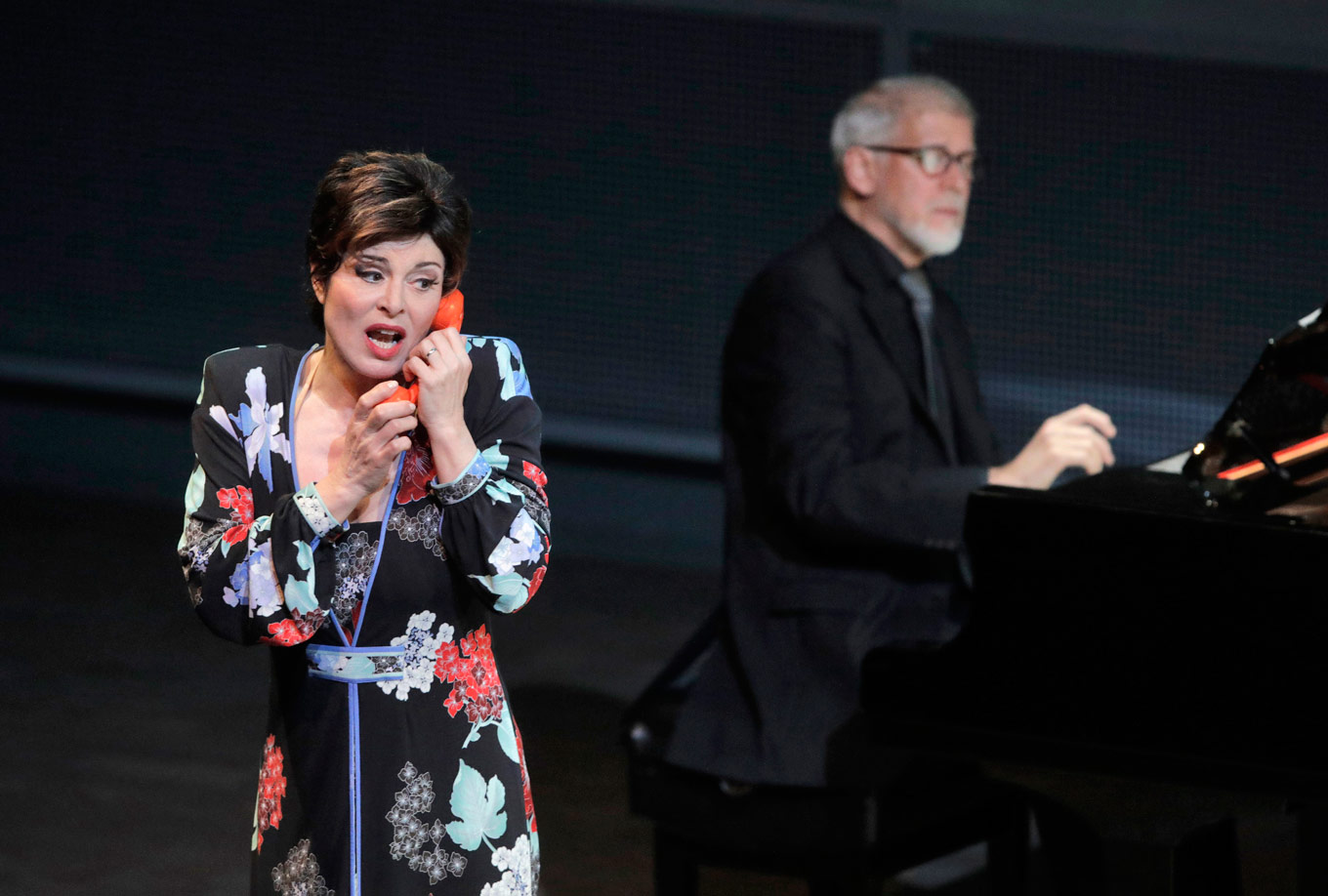
Talking with singers: Anna Caterina Antonacci
InterviewItalian soprano Anna Caterina Antonacci has a rich relationship with San Francisco Opera. She made her company debut in 1992 in Rossini’s Ermione, and returned in 1998 to sing in Norma opposite Carol Vaness. This year, she has returned for a compact run of performances of Poulenc’s La voix humaine with pianist Donald Sulzen. Along with the operatic adaptation of a troubling, one-sided phone conversation, Antonacci will sing Debussy’s erotic Chansons de Bilitis, Berlioz’s La mort d’Ophélie, and Poulenc’s La fraîcheur et le feu.
We spoke with Antonacci about her relationship with San Francisco Opera, Poulenc’s captivating one-woman work, and her unfailing passion for the theatre.
Why do you sing professionally?
Opera and theater have always been my passion, and also today, after so many years, my passion hasn’t diminished. I believe I’m very lucky that my work is my passion.
What are the unique challenges of singing a one-woman opera like La voix humaine? What intrigues you about this piece?
La voix humaine is unique because it’s not really a monologue. The protagonist is speaking to her lover and hears his answers on the telephone. The challenge is to make the audience imagine the unheard part of the conversation, and have them participate in the drama.
I performed this piece for the first time at the Opéra Comique in Paris, wonderfully directed by Ludovic Lagarde, and we performed it multiple times. I am drawn to this work because it’s modern and universal. It’s a magnificent theatrical text and is the subject of many cinematic versions. My favorite is the English version with Ingrid Bergman.

Can you tell us about your relationship with San Francisco Opera?
San Francisco Opera has been a recurring point of reference my entire career: I sang here the first time as a young Rossini artist, then a few years later with Carol Vaness in Norma, in 2015 in the wonderful opera Two Women and in Les Troyens, and today I’m back for La voix humaine. With this continuity, San Francisco Opera has shown me not only a great deal of confidence, but has also shown affection for me as an artist. After nearly 30 years in this career, I can assure you that this is most appreciated! Both Donald Sulzen and I are very impressed by the care with which this concert has been prepared.

During your 2005 visit to San Francisco, how did you stay focused while performing Two Women, and stepping in for Les Troyens at the same time?
In 2015 I agreed to sing in both operas simultaneously because it was impossible to only choose one; both roles are just too beautiful! Naturally I knew it was risky, as Two Women was a new work, but I had created Cassandre in McVicar’s production in London, done it again the year prior at La Scala, and I knew the role with every fibre of my being.
I was helped a great deal in rehearsals. They made sure not to tire or stress me out, and I spent the month living in near seclusion: I only left my apartment for rehearsals, went to bed early, and barely talked so that I wouldn’t tire out my voice. It all proved to be worth it in the end.
If you didn’t sing for a living, what would you do instead?
Had I not become a singer I would have become an actress, so as not to distance myself too much from the theater.
La voix humaine runs at San Francisco Opera’s SF Opera Lab until March 17. For details and ticket information, click here.


Comments